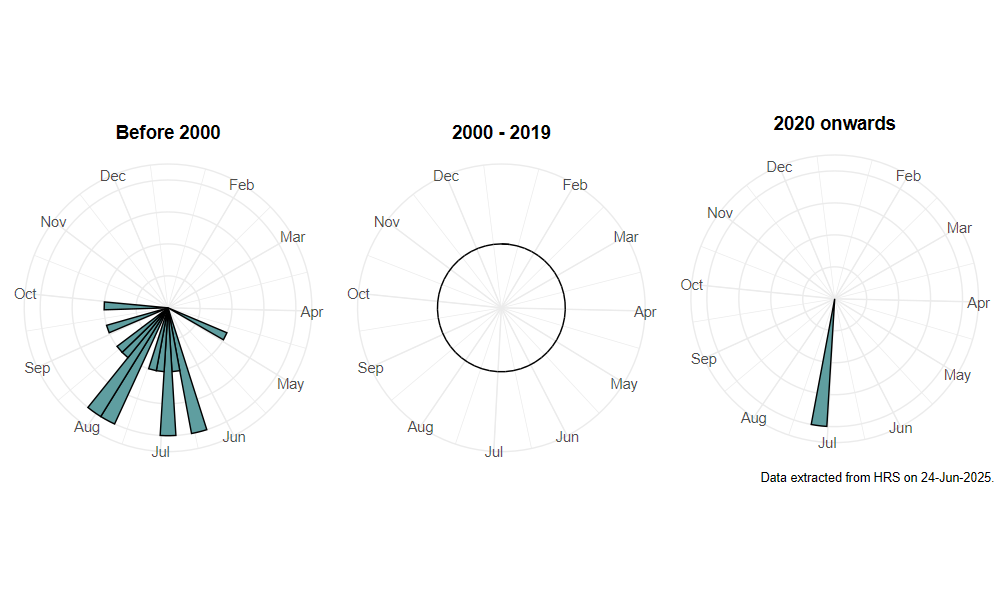Melangyna ericarum (Collin, 1946)
Identification
Identification difficulty = 4. ![]()
![]() according to Ball & Morris, 20241
according to Ball & Morris, 20241
Synonymy
Syrphus ericarum Collin in Coe(1953)2.
Biology
The larvae of Melangyna are aphidophagous, but those of M. ericarum are as yet unknown. Adults have been recorded from native Scots Pine Pinus sylvestris woodlands in the Scottish Highlands. They can be swept or found visiting flowers in open rides where they fly low down over the bare edges of tracks and clearings.
Flight period
The following plots show the number of unique records per week excluding those reported to be of immature stages.

Status
VULNERABLE - Ball & Morris, 20143. Rare (RDB3) - Falk, 19914.
Distribution
A species of the Caledonian pine forests that is largely confined to the Cairngorms, with just a single post-1990 report from Loch Tulloch.

-
Ball, S., & Morris, R. (2024). Hoverflies of Britain and Ireland. WILDGuides (3rd ed.). Oxford: Princeton University Press. ↩
-
Coe, R. (1953). Diptera: Syrphidae. Handbooks for the Identification of British Insects, 10(1), 1–98. ↩
-
Ball, S., & Morris, R. (2014). A review of the scarce and threatened flies of Great Britain. Part 6: Syrphidae. ( No. 9). Species status (pp. 1–130). Peterborough: JNCC. ↩
-
Falk, S. (1991). A review of the scarce and threatened flies of Great Britain. ( No. 39). Research and Survey in Nature Conservation (pp. 1–194). Peterborough: NCC. ↩